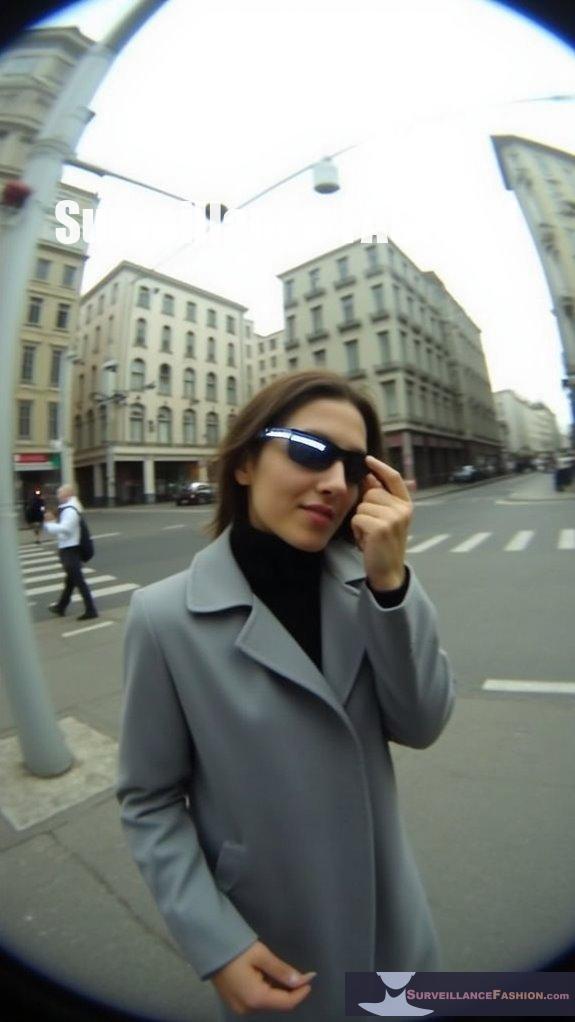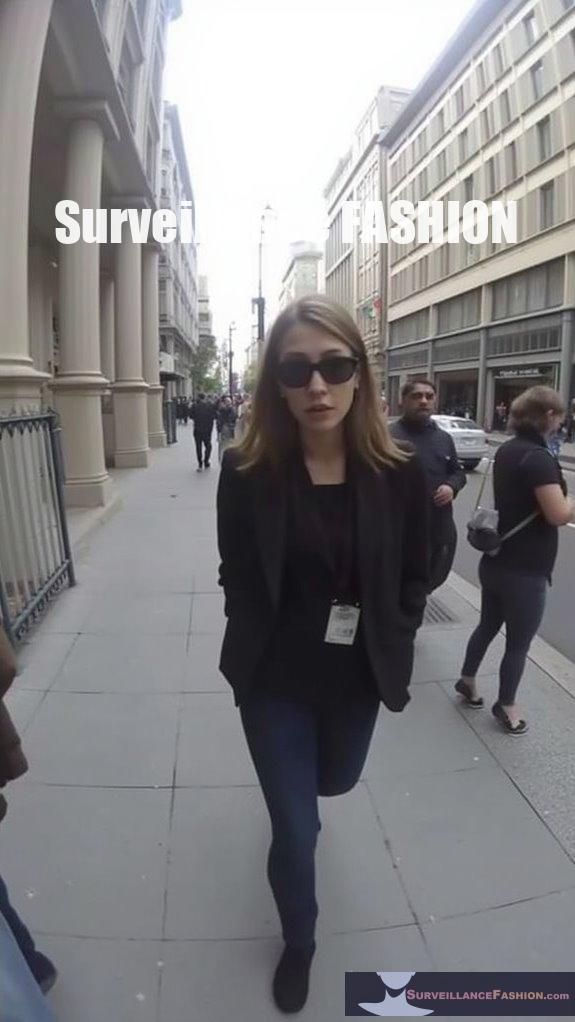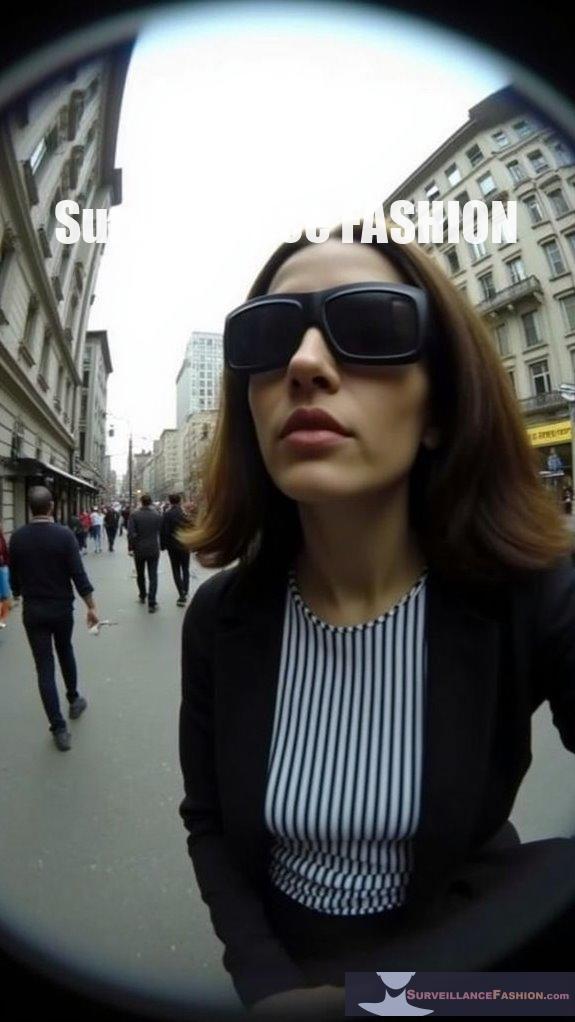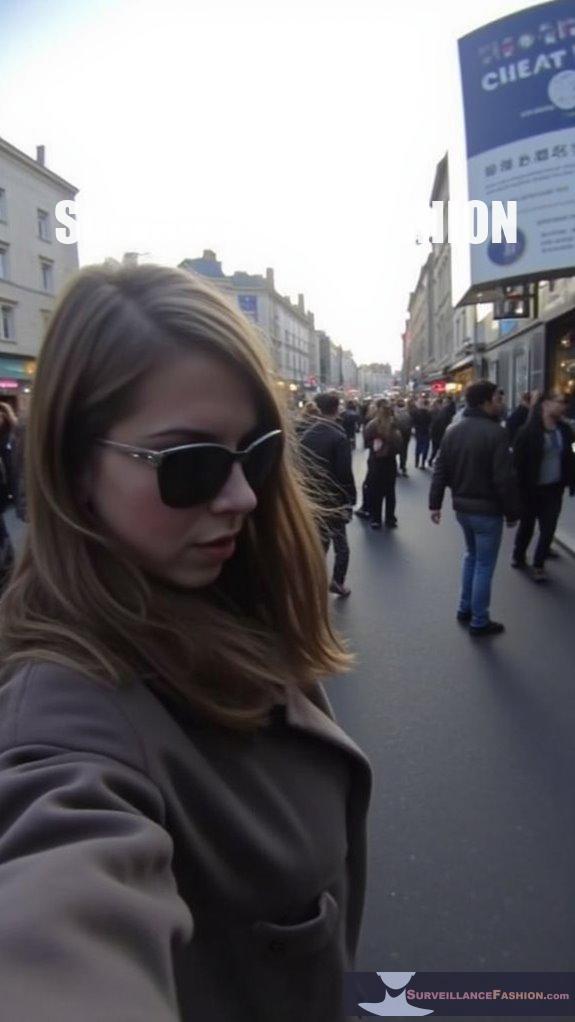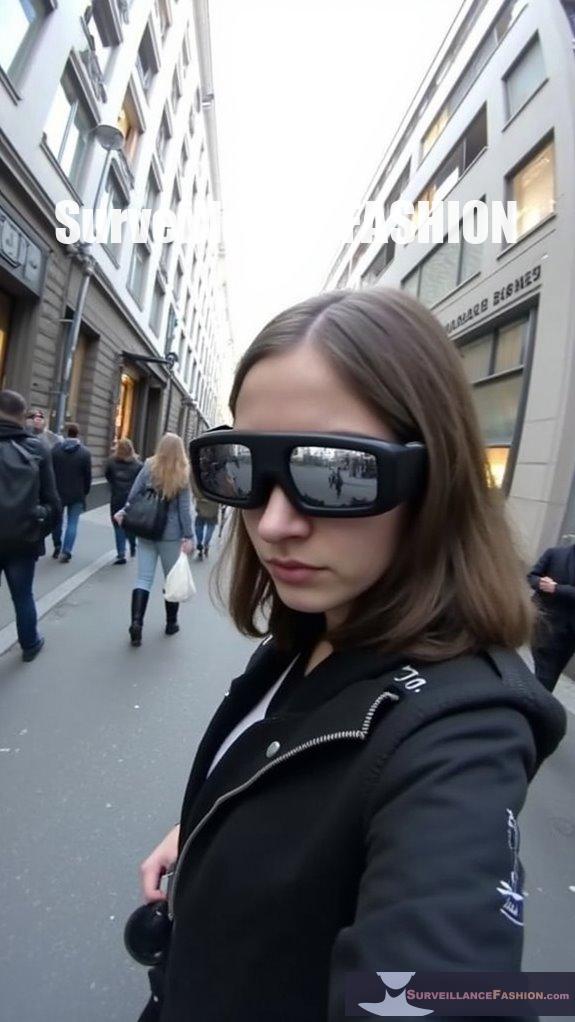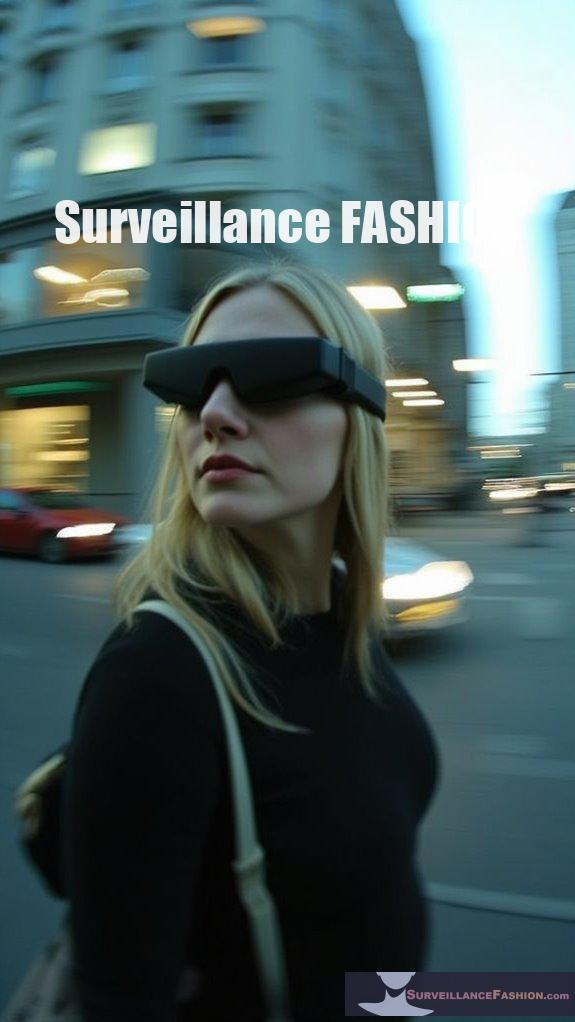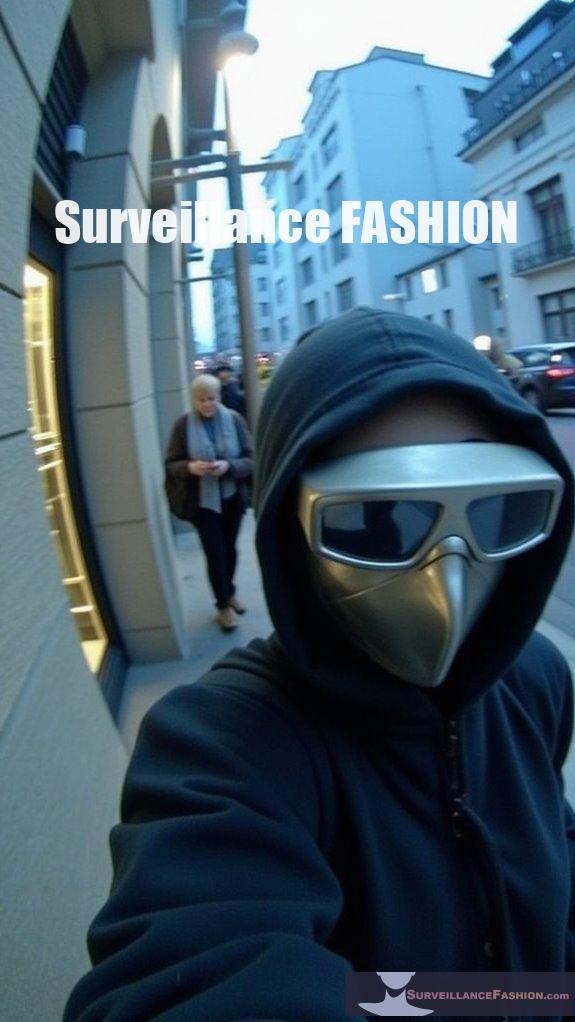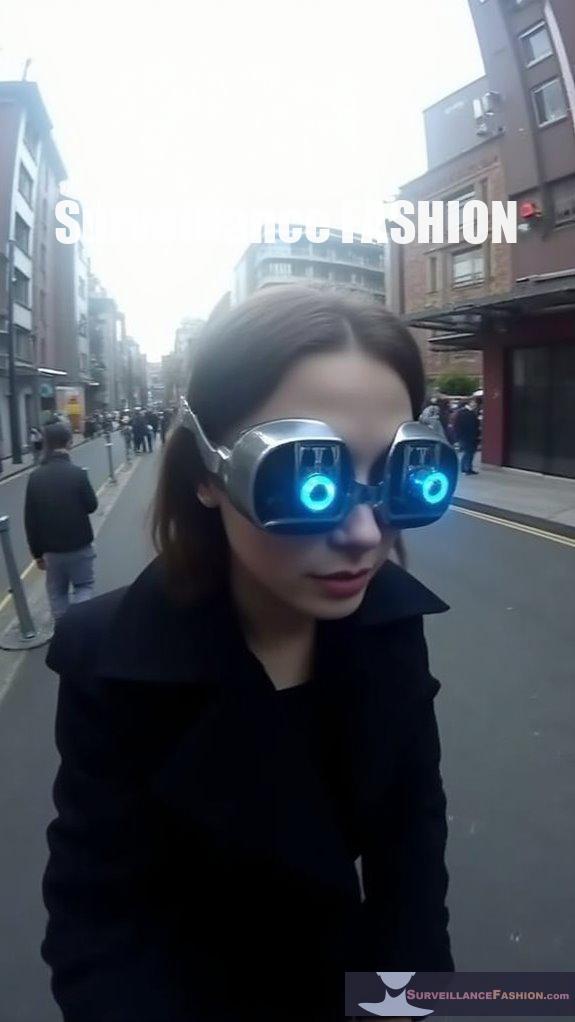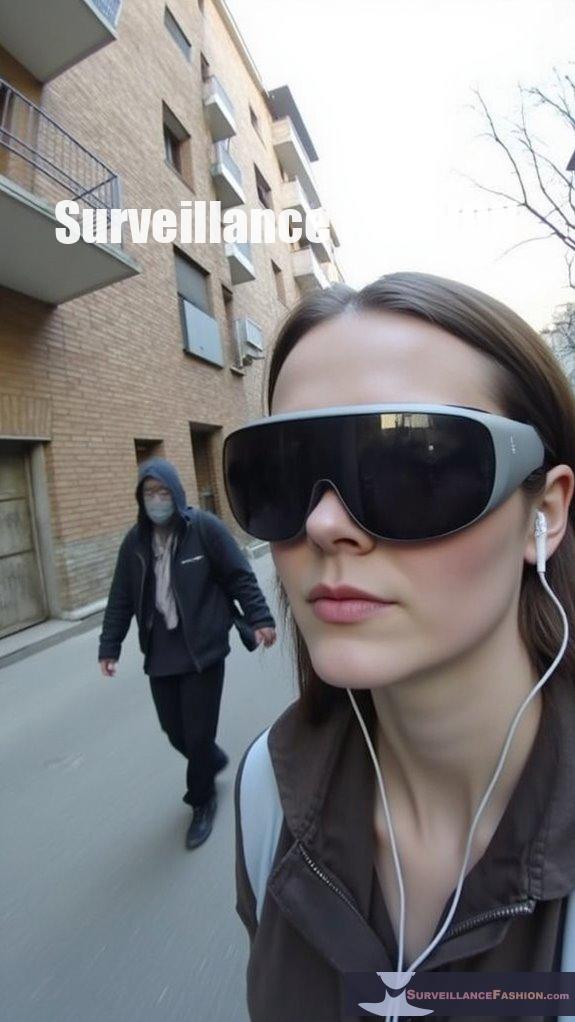Got a friend who swears by their new Ray-Ban Meta smart glasses?
Talk about a privacy nightmare!
I tried them once and felt like I was in a sci-fi horror flick. They capture everything – voice, visuals – you name it. I couldn’t shake the feeling that my every move was being recorded without my knowledge.
It’s like taking a peek into the digital wild west. Isn’t that… comforting?
Honestly, it’s unnerving to think about all my whispers, captured and stored. While I fiddled with the settings to shield my personal life, I realized: why should I be the one down the rabbit hole?
I guess it’s true: privacy is dead, and we’re just living in its ghost.
The Silent Dangers of Meta Ray-Ban Smart Glasses
A few months back, I was at a café and spotted someone wearing those Ray-Bans. I noticed them capturing video of other patrons. It felt intrusive. I had my own experience; walking past a group of friends, I accidentally caught a glimpse of their recordings and their chuckles. It hit me – who needs consent anymore? There’s this fine line between innovation and invasion. The constant surveillance doesn’t just bother me, it’s like entering a Twilight Zone episode where everyone’s a potential subject for someone else’s data collection spree. Conversations about cybersecurity and digital privacy, along with laws regarding biometric data, are becoming more significant. Do we even know what we’re signing up for?
Quick Takeaways
- Ray-Ban smart glasses collect visual and audio data through cameras and voice commands, storing information locally but potentially exposing it to cloud services.
- Voice recordings can be retained for up to twelve months, with “Hey Meta” commands automatically uploaded for AI training purposes.
- The 12MP camera system enables continuous monitoring capabilities, raising significant privacy concerns for both users and bystanders.
- EMG sensors in the neural band track muscle movements, creating risks of unauthorized behavioral profiling through biometric data collection.
- Privacy settings are default-enabled and require manual adjustment, with limited user control over data collection and AI processing features.
Understanding Core Data Collection Features

While Meta’s Ray-Ban smart glasses represent a significant leap in wearable AI technology, their core data collection features warrant careful scrutiny from privacy-conscious individuals.
The glasses leverage Qualcomm’s AR1 Gen 1 platform, processing visual and gestural data through multiple AI-driven systems that can capture and analyze your surroundings without explicit consent. Additionally, these systems employ advanced data analytics that enhance the capability to discern user interactions in real-time.
You’ll find that these devices employ a sophisticated sensor suite, including cameras activated by voice commands like “Hey Meta” or through subtle EMG wristband gestures.
Though data primarily remains stored locally on your paired smartphone, Meta’s updated privacy policy expands AI-related data collection capabilities. Voice recordings and audio clips can be retained for up to twelve months in storage.
When users engage cloud AI services or share content, their visual data enters Meta’s broader ecosystem, potentially exposing sensitive information to third-party analysis and retention.
Voice Recording and Cloud Storage Policies
Meta’s voice recording policies for Ray-Ban smart glasses raise significant red flags regarding user privacy and data autonomy.
The system stores voice recordings triggered by “Hey Meta” for up to a year by default, with no opt-out option beyond manually deleting individual clips through the companion app.
Meta retains voice commands from smart glasses for a full year, forcing users to manually remove recordings one by one.
While you’ll see a notification LED when audio processing occurs, your voice commands are automatically uploaded to Meta’s cloud services for AI training purposes.
The implications extend beyond simple command recognition, as Meta leverages this data to enhance their broader AI ecosystem.
Though you can disable voice features entirely, you can’t prevent the initial collection and storage of recordings when the feature is active.
This default cloud storage approach represents a concerning shift away from local processing, mirroring similar trends across the tech industry. Additionally, this reliance on cloud storage raises concerns about privacy and user control over personal data usage.
Privacy Settings and User Control Options
Despite offering a dedicated privacy section within the Meta View app, the Ray-Ban Meta glasses’ privacy controls present concerning limitations that warrant careful scrutiny from privacy-conscious users.
While you’ll find options to manage voice storage, AI features, and data sharing preferences, several critical settings are enabled by default and require manual intervention to protect your privacy.
You can control whether Meta AI processes your captures and disable voice controls entirely, yet the default configuration allows AI analysis of your photos and videos.
Although you’re able to factory reset the device and delete voice recordings through the companion app, Meta’s updated privacy policy retains broad rights to utilize captured data for AI training.
This exemplifies why we launched Surveillance Fashion – to highlight how seamless AI integration often prioritizes convenience over privacy protection.
Biometric Data Tracking Through Neural Band
The advanced neural band technology integrated into Ray-Ban Meta glasses represents a significant escalation in biometric data collection, employing electromyography (EMG) sensors that continuously monitor and interpret the subtle electrical signals from users’ muscle movements. While this enables intuitive hands-free control, it also creates unprecedented privacy vulnerabilities through constant biometric surveillance.
| Data Type | Privacy Risk | Security Concern |
|---|---|---|
| EMG Signals | Unique Muscle Patterns | Behavioral Profiling |
| Neural Inputs | Activity Recognition | Unauthorized Access |
| Gesture Data | Movement Tracking | Data Interception |
You’ll want to understand that this technology, while innovative, introduces serious concerns about data retention and sharing. The neural band’s ability to capture and process your physiological signals raises questions about Meta’s data handling practices and the potential for unauthorized biometric surveillance – issues we regularly examine at Surveillance Fashion to protect individual privacy rights.
Mandatory AI Integration and Its Implications
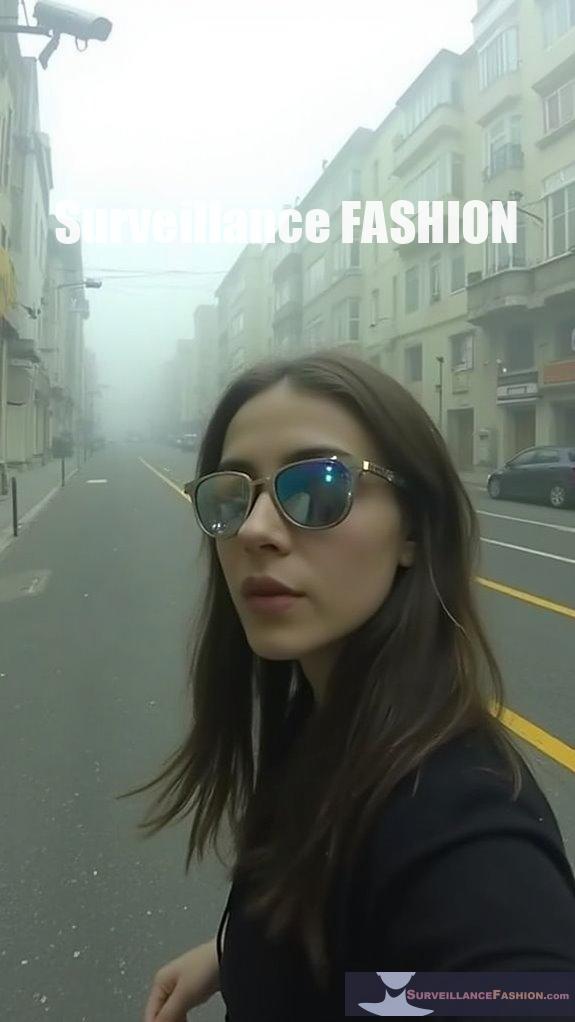
While smart glasses technology continues advancing rapidly, Ray-Ban Meta’s mandatory AI integration represents an unprecedented shift in wearable computing that you’ll need to carefully evaluate.
The always-on AI assistant processes your data continuously through:
- Real-time audio capture for voice commands and translations
- Visual analysis of your surroundings through integrated cameras
- Situational processing of environmental data for AR overlays
This mandatory integration means you can’t opt out of AI-driven features while using core functionalities, raising significant privacy concerns about data collection and processing.
The glasses’ deep integration with Meta’s AI services, combined with third-party app connections, creates a complex web of data sharing that could expose sensitive personal information.
We’ve launched Surveillance Fashion to help you understand these emerging risks as AI becomes increasingly embedded in everyday wearables.
Current Privacy Risks and Protection Measures
As smart glasses seamlessly integrate into daily life, Ray-Ban Meta’s latest privacy policy changes present unprecedented risks for both wearers and bystanders, fundamentally reshaping how personal data flows through our social spaces.
You’re now facing a reality where anyone wearing these devices can capture your biometric data, conversations, and daily activities without explicit consent.
Smart glasses turn everyday moments into potential privacy breaches, capturing personal data and conversations without our knowledge or permission.
Meta’s mandatory AI integration means your recorded data could be stored for up to a year, while third-party apps might link your physical presence to digital identities.
In sensitive environments like hospitals, these glasses bypass critical security protocols, potentially exposing protected health information.
That’s why we launched Surveillance Fashion – to track these advancing risks and advocate for stronger privacy protections through granular user controls and transparent data handling policies.
Spy-Wear Meets High Fashion
Sophisticated surveillance technology now masquerades as high fashion through Ray-Ban Meta’s sleek integration of AI-powered cameras, microphones, and sensors into iconic frame designs like the Wayfarer and Skyler.
As you navigate public spaces, these fashion-forward surveillance devices enable wearers to capture your likeness through:
- Ultra-wide 12MP cameras discreetly embedded in frame edges
- Voice-activated AI systems responding to “Hey Meta” commands
- Touch-sensitive controls allowing covert photo and video capture
At SurveillanceFashion.com, we’ve observed how collaborations with influencers like A$AP Rocky and premium positioning through Ray-Ban’s retail network have normalized these sophisticated monitoring devices.
This transformation is turning potentially invasive technology into coveted accessories that blur the line between style statement and surveillance tool.
Data Collection and Privacy Concerns With Ray-Ban Meta Glasses Usage
Despite Meta’s sleek marketing of Ray-Ban smart glasses as fashionable accessories, the underlying privacy implications of their mandatory AI data collection practices warrant serious scrutiny.
Their latest policy update enforces permanent Meta AI activation unless voice features are completely disabled, while storing voice recordings in the cloud for up to a year without an opt-out option.
You’ll find essential data collection goes far beyond basic functionality, encompassing sensor inputs, usage patterns, and system information.
While you can manage some privacy settings through the Meta View App, the 12MP camera with in-lens viewfinder raises significant concerns about bystander privacy in public spaces.
Though a capture LED indicates recording, it’s potentially concealable, making these fashion-forward frames a powerful surveillance tool that could normalize constant monitoring in our daily lives.
Smartwatch Data Theft Prevention

While smartwatches offer unprecedented convenience through their array of sensors and connectivity features, they’ve become increasingly attractive targets for data thieves seeking to exploit their treasure trove of personal information.
You’ll need robust security measures to protect your sensitive data from unauthorized access and potential breaches.
Consider these essential protective steps:
- Enable PIN locks and automatic security features that trigger when the device is removed
- Connect only to encrypted networks and use multi-factor authentication
- Regularly audit app permissions and maintain strict control over data access
At Surveillance Fashion, we’ve observed that maintaining vigilant security practices isn’t just about protecting your own data – it’s about preventing your device from becoming a vulnerability that compromises the privacy of those around you through unauthorized data collection or transmission.
Framed: The Dark Side of Smart Glasses – Ebook review
Innovation in wearable technology has ushered in a new era of privacy concerns, as evidenced in the thought-provoking ebook “Framed: The Dark Side of Smart Glasses.”
The thorough analysis explores how devices like Ray-Ban Meta glasses, equipped with 12-megapixel cameras and AI-driven features, create an unprecedented web of surveillance that extends far beyond the wearer’s personal sphere.
You’ll find the ebook’s systematic breakdown particularly relevant, as it examines how these glasses can capture continuous visual data, record audio, and process environmental information through AI services.
The text thoughtfully addresses the risks of unauthorized recording, data interception, and the complex implications of AI integration.
While platforms like Surveillance Fashion track these developments, the ebook provides a detailed framework for understanding the full scope of privacy challenges in our increasingly augmented world.
FAQ
Can Ray-Ban Meta Glasses Be Hacked to Secretly Record Without LED Indicator?
While there’s no confirmed evidence of LED indicator hacks, you’ll want to stay vigilant – theoretical vulnerabilities exist and Harvard students have already demonstrated pairing the video feed with facial recognition software.
How Do Ray-Ban Meta Glasses Handle Data Collection During International Travel?
You’ll need to sync data through your paired smartphone while traveling internationally, with location services enabled. Be mindful that data collection must comply with local privacy laws and regulations.
What Happens to Collected Data if Meta Goes Bankrupt?
Your collected data could be sold as a company asset during bankruptcy, leaving you with limited control. You’ll want to delete your data before any insolvency proceedings begin.
Can Law Enforcement Request Access to Ray-Ban Meta Glasses Recordings?
Yes, you’ll want to know that law enforcement can access your glasses’ recordings through warrants, subpoenas, or court orders once they’re uploaded to Meta’s cloud – it’s standard legal procedure.
Do Ray-Ban Meta Glasses Work With Prescription Lenses While Maintaining Privacy Features?
Yes, you can get prescription lenses for your Ray-Ban Meta glasses while keeping all privacy features intact. They’ll work with prescriptions from -6.00 to +4.00, offering various lens materials and coatings.
References
- https://www.meta.com/ai-glasses/privacy/
- https://tech.slashdot.org/story/25/05/01/1445212/meta-now-forces-ai-data-collection-through-ray-ban-smart-glasses
- https://www.lenscrafters.com/lc-us/discover-meta-ray-ban-display
- https://www.meta.com/help/ai-glasses/483508126732797/
- https://www.ray-ban.com/usa/ray-ban-meta-ai-glasses
- https://petapixel.com/2025/05/01/meta-updates-smart-glasses-policy-to-expand-ai-data-collection/
- https://moorinsightsstrategy.com/research-notes/ray-ban-meta-smart-glasses-review-better-cooler-and-more-useful-than-ever/
- https://www.youtube.com/watch?v=1jDorDsi9JM
- https://about.fb.com/news/2025/09/meta-ray-ban-display-ai-glasses-emg-wristband/
- https://www.meta.com/ai-glasses/meta-ray-ban-display/
- https://www.meta.com/blog/meta-ray-ban-display-ai-glasses-connect-2025/
- https://about.fb.com/news/2025/09/ray-ban-meta-gen-2-better-battery-life-video-capture/
- https://www.ray-ban.com/usa/discover-ray-ban-meta-ai-glasses/clp
- https://techcrunch.com/2025/04/30/if-you-own-ray-ban-meta-glasses-you-should-double-check-your-privacy-settings/
- https://www.ray-ban.com/usa/c/frequently-asked-questions-ray-ban-meta-smart-glasses
- https://www.youtube.com/watch?v=wXe2IZmIyN0
- https://ivanzo.com/control-your-privacy-with-ray-ban-meta-glasses/
- https://www.ray-ban.com/usa/l/discover-meta-ray-ban-display
- https://www.youtube.com/watch?v=gZ9IsB72nVk
- https://www.bestbuy.com/product/meta-ray-ban-display-neural-band–ai-glasses-with-in-lens-display-shiny-frame-standard-band-size-1-black/J3LHRV8TTX
- https://www.meta.com/ai-glasses/meta-ray-ban-display-glasses-and-neural-band/
- https://www.youtube.com/watch?v=hmKEZYUpNbA
- https://www.meta.com/help/ai-glasses/326686793146045/
- https://www.youtube.com/watch?v=aI8IfNt9ams
- https://about.fb.com/news/2024/09/ray-ban-meta-glasses-new-ai-features-and-partner-integrations/
- https://www.techi.com/meta-smart-glasses-privacy-concerns-facial-recognition/
- https://www.youtube.com/watch?v=OHYKj19c1no
- https://www.lbmc.com/blog/meta-rayban-smart-glasses-hospital-ban/
- https://cybersecurityadvisors.network/2025/05/19/not-a-good-look-ai-what-happens-to-privacy-when-glasses-get-smart/
- https://www.ray-ban.com/usa/electronics/RW4006ray-ban | meta wayfarer-black/8056597988377
- https://www.youtube.com/watch?v=ViA4-YWx8Y4
- https://www.targetoptical.com/to-us/ray-ban-meta
- https://www.meta.com/ai-glasses/
- https://www.expressvpn.com/blog/smartwatch-security/
- https://usa.kaspersky.com/resource-center/threats/smartwatch-security-risks
- https://www.hewore.com/smartwatch-security-privacy-guide/
- https://eiposgrados.com/eng/cybersecurity-blog/protecting-smart-watch-how-to-protect-yourself-from-hackers/
- https://www.telefonica.com/en/communication-room/blog/how-to-prevent-cyberfraud-with-smartwatches/
- https://slnt.com/blogs/insights/is-your-smartwatch-tracking-you-understanding-the-privacy-implications-of-wearable-tech
- https://www.youtube.com/watch?v=rOqmvxcbZg4


